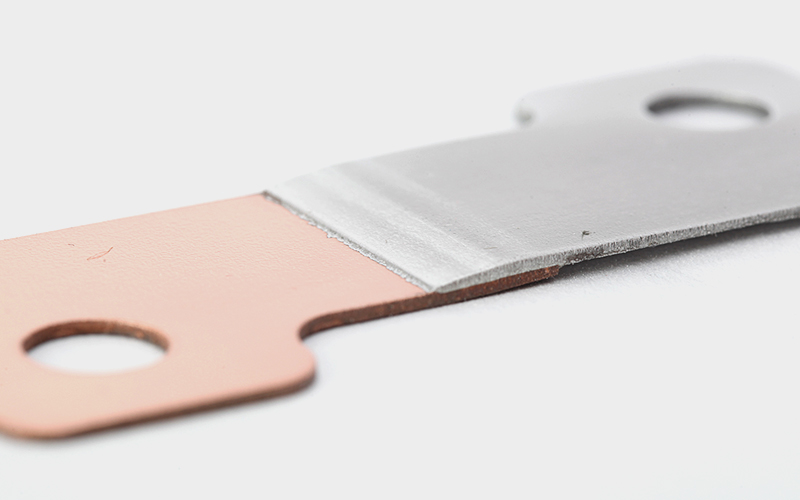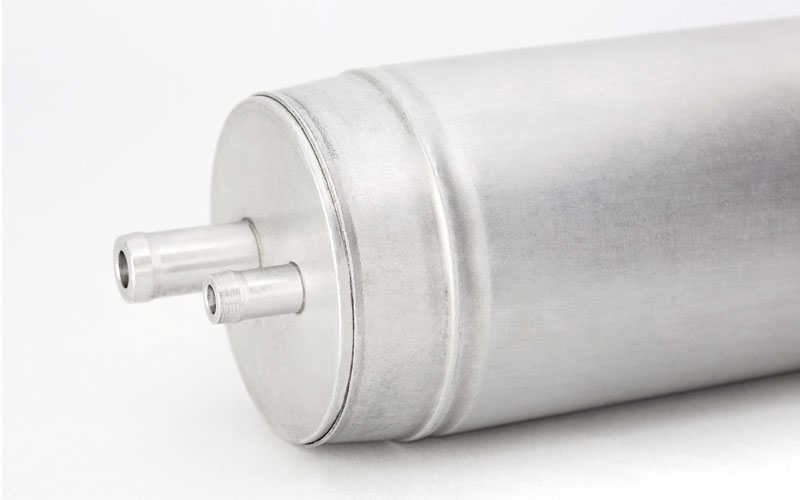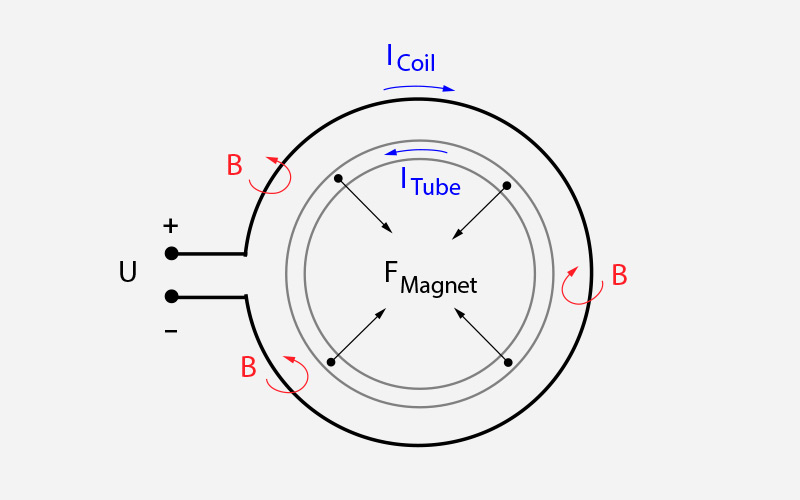

A current-loaded conductor suffers a force, when being placed in a magnetic field. This Force is called Lorenz force to honour Hendrik Anton Lorentz, who first analyzed it. In case the magnetic field is generated by a parallel lined second conductor, both conductors will attract themselves when current is running in same direction and repel when current direction is opposite in both wires. Projecting this phenomenon onto an electrical conductive tube cross-section placed inside a coil, the coil represents one conductor, whereas the tube is the second one. If the coil is now loaded by an altering current, an opposite current flow is induced into the tube according to Lenz's rule. Induced current and coil current are by this running in opposite direction and thus generating a repellant force, compressing the tube’s diameter. The picture below illustrates current direction in coil and tube, generated magnetic fields and compressive forces loaded the tube cross-section.
An altering current is normally characterized by a sinusoidal current- time diagram. Current is rising until maximum amplitude and then decreases to zero again. The magnetic forces loading the tube cross-section show a parallel increasing and decreasing behavior to the current. When magnetic force amplitude becomes high enough to overcome tube material’s yield stress and inertial forces, a compression of the tube diameter becomes significant. Radial tube velocities of 450m/s and above are normal for EMPT applications. This high strain rate loading of the material facilitates several beneficial aspects seen in EMPT applications, namely welding of metals, springback reduction, and increase in formability of some metals like Aluminum, Titanium and Magnesium (see picture below left).
To generate the above mentioned high magnetic forces, substantial discharge current amplitudes are essential.
However, this discharge current is only switched on for a couple of microseconds. By this a small amount of energy is capable to generate the tremendous power essential to overcome tube material yield stress and inertial forces (see picture below in the middle). As a rule of thumb, an EMPT process is conducted in a timespan of not more than 25µs!
EMPT tools do not touch the workpiece, however they suffer high reaction forces within short time pulses. Finite Element analysis helps to design tools and processes efficiently facilitating low wear at high tool efficiency, allowing the EMPT user taking benefit of highly economic processes. Picture below illustrates the results of an FEA analyzed fieldshaper used for mass production of control arms.

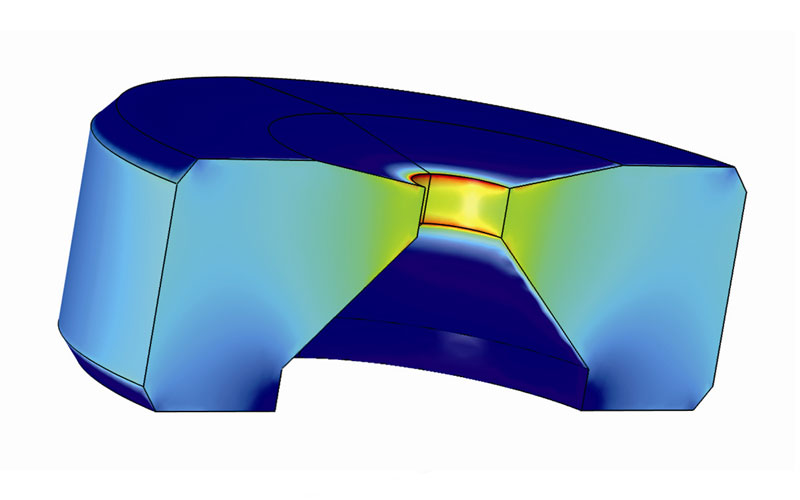
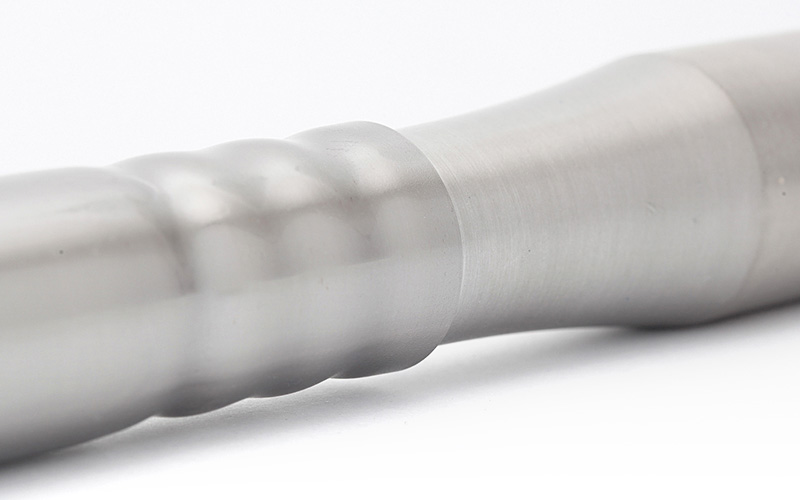
The high discharge currents, essential for forming a workpiece are generated with the help of a so called pulsegenerator. Its major component is a capacitor battery, charged by high voltage, as well as a high power switch unit. Besides to this, the pulsegenerator is equipped with a high voltage capacitor charging unit, PLC and safety controls. To EMPT-form or -join a workpiece positioned in the tool coil, it is firstly essential to charge the capacitor battery. This process takes about 3 to 8 seconds. When charging process is accomplished, a high-current switch closes a current loop between capacitors and coil. The high power current discharge becomes effective, generating a substantial magnetic flux density field in the coil.
This set up generates current pulses of several 100kA amplitudes within some microseconds. However, the power consumption from mains essential to charge the capacitors is quite low. During the 3-8 seconds time interval of the capacitor charging process only small energy is consumed, so a 3x380V/32A power mains connection is sufficient to operate an EMPT machine in mass production.
The electricity cost per pulse for a PS64-16 (64kJ) system is only 0,0015€!
